Road Rules 2014 provides a uniform set of rules that apply throughout NSW. These rules have been developed to help ensure the following.
- Parking spaces are made available by restricting the length of time a vehicle may park.
- Certain types of vehicles can park for loading purposes.
- Vehicles don’t park in a way that would be dangerous to other road users.
- Vehicles do not obstruct pedestrians.
- Allowances are provided for people with disabilities.
- Drivers are aware of child safety around school zones.
To assist with understanding of parking rules commonly encountered in the Georges River Council area following rules, the below definitions are provided.
| Park |
Includes stop and allow the driver’s vehicle to stay (whether or not the driver leaves the vehicle). |
| Road |
is an area that is open to or used by the public and is developed for, or has as one of its main uses, the driving or riding of motor vehicles. |
| Road related area |
An area that divides a road, a footpath or nature strip adjacent to a road, an area that is not a road and that is open to the public and designated for use by cyclists or animals, an area that is not a road and that is open to or used by the public for driving, riding or parking vehicles. |
| Stop |
includes park, but does not include stop to reverse the driver’s vehicle into a parking bay or other parking space. |
Parking control sign rules
-
No stopping
You must not
stop your vehicle in the direction of arrow or arrows, unless there is a medical or other emergency.
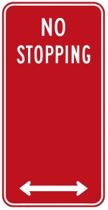
-
No parking
You may stop your vehicle in the direction of the arrow or arrows of a No Parking zone if you are picking up or dropping off passengers or goods and;
- Not stop for more than two minutes, and
- Remain in or within 3 metres of the vehicle.
Hours of operation may apply to some signs, such as school zones, meaning restrictions apply for those times only.
In some areas a ‘Pick up & set down area’ sign may accompany the No Parking sign, these signs have serve to reinforce the purpose of the zone.

-
Permissive parking signs
You must not park your vehicle continuously on a length of road in the direction of arrow or arrows or an area for longer than allowed by the period indicated on the sign. These signs may display certain hours and particular days that the time restrictions apply, as shown below.
1P means that you may park for one hour during the times displayed on particular days.

2P Permit Holders Excepted means you may park for two hours during the times displayed on particular days however if you are the holder of a valid Resident Parking Scheme permit, the time restrictions do not apply.

1/2 P means you may park for 30 minutes during the times displayed on particular days.

For drivers of vehicles that display a Mobility Parking Scheme permit, the following time extensions apply only to park in these zones;
- 30 minutes, if the maximum period on the sign is less than 30 minutes, or
- 2 hours, if the maximum period on the sign is 30 minutes, or
- An unlimited period of time, if the maximum period on the sign is more than 30 minutes.
-
Accessible parking
Only vehicles transporting a person who is in possession of a current Mobility Parking Scheme (MPS) permit can park in areas where this sign applies. The permit must be clearly displayed in the parked vehicle. Permit holders must comply with the conditions of use of the permit.

-
Loading zone
Only drivers of vehicles principally constructed for carrying goods may park their vehicle in a loading zone. Most SUV type vehicles are not permitted to park in loading zones.
Generally speaking utility vehicles or vans may stop for the period during which goods are being dropped off or picked up or 30 minutes (whichever is the lesser).
If you are driving any other vehicle, such as a sedan, you may only stop for as long as it takes to pick up or set down passengers.

-
Bus zone
You are not allowed to stop your vehicle in the direction of the arrow or arrows, unless you are driving a bus.
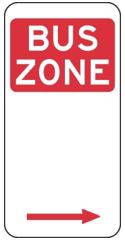
-
Taxi zone
You are not allowed to
stop your vehicle in the direction of the arrow or arrows, unless it is a taxi.

-
Clearways
You must not stop your vehicle in an area or between these signs during the times shown unless there is a medical emergency. Buses and taxis may stop to pick up or set down passengers. Vehicles left on clearways may be towed away.
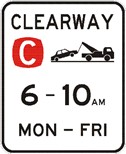
-
Angle parking
Angle parking signs specify an angle at which your vehicle must be parked and may include line markings on the road.
Signs may also require a vehicle to park either front or rear in.

Other rules - non signposted
-
Double parking
You must not stop on a road and have any part of your vehicle between a vehicle parked at the side of the road, and the centre of the road. Under this legislation parking and stopping mean the same thing. See examples below:

-
Stopping too close to an intersection
You must not stop within 10m of an intersection, without traffic lights, unless signs indicate otherwise.

-
Stopping on or near a pedestrian crossing
You may not stop on a pedestrian crossing or within 20m before or 10m after the crossing.

-
Stopping on a footpath or nature strip
You must not park a vehicle on a footpath or nature strip unless there are signs permitting parking or there are marked parking bays present.

-
Stopping on or across a driveway
You must not stop your vehicle on or across a driveway unless;
- Passengers are being picked up or dropped off, and
- The vehicle is not left unattended, and
- It is done as soon as possible after stopping and in any case within 2 minutes of stopping
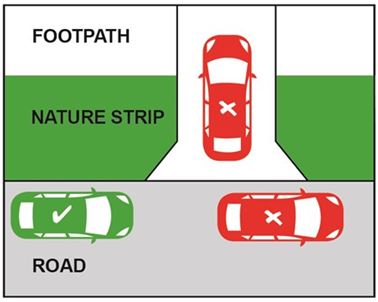
-
Heavy or long vehicles
A vehicle with a gross vehicle mass of more than 4.5tonnes or 7.5 metres long or longer may only park in a built-up area for a maximum of 1 hour unless;
- Picking up or dropping of goods, or
- As long as permitted on timed parking signs, or
- The vehicle is a bus.
There are no signs required for this rule.
On some roads no truck signs are present. These indicate that trucks are not permitted to drive beyond the sign unless their destination lies beyond that sign and that is the only route available.
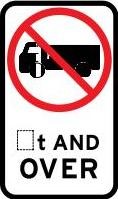
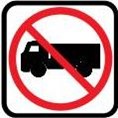
-
Parallel parking
When parallel parking on a road, you must park you vehicle so that;
- On two way roads, park as near as practicable to the left side of the road and facing in the same direction as traffic flow.
- On one way roads, park as near as practicable to the far left or right side of the road and in the same direction as traffic flow.
- At least 3metres is allowed between the side of you vehicle and the line/strip, unless signs indicate otherwise.
Two-way
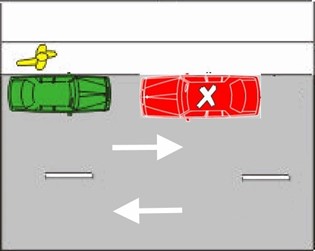
One-way

Dividing line/strip
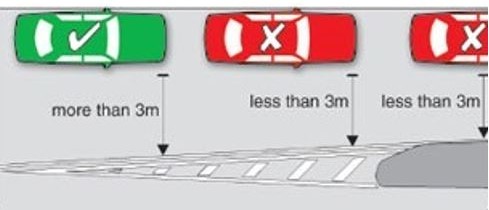
.
Thank you for your feedback.